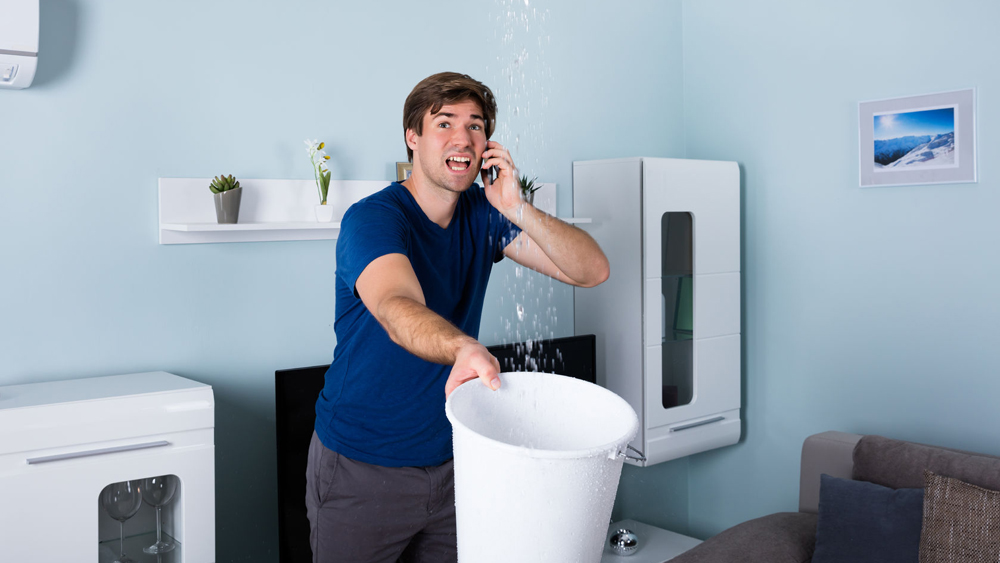Unveiling Common Sources Behind Residential Water Leak Issues
Unveiling Common Sources Behind Residential Water Leak Issues
Blog Article
We've noticed this great article relating to How to detect water leaks in your home listed below on the internet and concluded it made sense to relate it with you on this site.

Leaks not just trigger waste of water however can also create unneeded damages to your house and also advertise undesirable organic development. By recognizing and also looking for daily circumstances that create leakages, you can secure your house from future leaks as well as unneeded damage.
Immediate temperature adjustments.
Extreme temperature level modifications in our pipelines can trigger them to broaden and also get unexpectedly. This development and contraction may create splits in the pipes, particularly if the temperature level are listed below freezing.
Rusty water supply
This may be the reason of staining or bending on your water pipelines. If our plumbing system is old, think about replacing the pipes since they are at a higher danger of deterioration than the newer versions.
Faulty Pipe Joints
Pipe joints can degrade over time, resulting in water leaks. If you have noisy pipes that make ticking or banging sounds, particularly when the hot water is transformed on, your pipeline joints are probably under a whole lot of pressure.
Elbowing in origins
A lot of water leakages begin outside the house rather than inside it. You might notice damp spots or sinkholes in your lawn, and that might mean that tree origins are getting into water lines causing water to seep out.
Poor Water Connectors
Sometimes, a leak can be caused by loosened hose pipes and pipes that provide your devices. Typically, changing is what causes the loose water Connections. You may find in the case of a cleaning machine, a hose might spring a leak as a result of shaking during the spin cycle. In case of a water connections leak, you may notice water running straight from the supply line or pools around your devices.
Blocked Drains
Clogged drains pipes might be aggravating as well as inconveniencing, however they can often end up causing an overflow resulting in burst pipes. Keep eliminating any kind of products that may go down your drains pipes that can block them to stay clear of such hassles.
All the above are sources of leakages however not all water leakages arise from plumbing leaks; some leaks may originate from roof leaks. All leaks must be fixed immediately to avoid water damage.
Leaks not only trigger waste of water however can likewise create unneeded damages to your house and also advertise undesirable organic growth. By recognizing as well as looking for daily situations that cause leakages, you can shield your residence from future leaks and unneeded damages. Today, we will look at 6 leakage triggers that may be triggering your pipes to drip.
At times, a leakage can be caused by loosened pipes and also pipes that supply your devices. In situation of a water connections leakage, you might see water running directly from the supply line or puddles around your devices.
How To Check For Water Leak In Your Home
How To Check for Leaks
The average household's leaks can account for nearly 10,000 gallons of water wasted every year and ten percent of homes have leaks that waste 90 gallons or more per day. Common types of leaks found in the home are worn toilet flappers, dripping faucets, and other leaking valves. These types of leaks are often easy to fix, requiring only a few tools and hardware that can pay for themselves in water savings. Fixing easily corrected household water leaks can save homeowners about 10 percent on their water bills.
To check for leaks in your home, you first need to determine whether you're wasting water and then identify the source of the leak. Here are some tips for finding leaks:
Take a look at your water usage during a colder month, such as January or February. If a family of four exceeds 12,000 gallons per month, there are serious leaks.
Check your water meter before and after a two-hour period when no water is being used. If the meter changes at all, you probably have a leak.
Identify toilet leaks by placing a drop of food coloring in the toilet tank. If any color shows up in the bowl after 10 minutes, you have a leak. (Be sure to flush immediately after the experiment to avoid staining the tank.)
Examine faucet gaskets and pipe fittings for any water on the outside of the pipe to check for surface leaks.
Undetected water leaks can happen without the home or business owner even realizing. If you suspect a water leak, but not able to find the source. It is time to contact a professional water leak detection service, The Leak Doctor.
How To Find a Water Leak In Your Home
https://www.leakdoctor.com/blog/How-To-Check-For-Water-Leak-In-Your-Home_AE197.html

I am just very fascinated by How to detect water leaks in your home and I really hope you appreciated the new article. In case you enjoyed our page if you please be sure to pass it around. I enjoy reading our article about Top Causes of Home Water Leaks.
Schedule Appointment Report this page